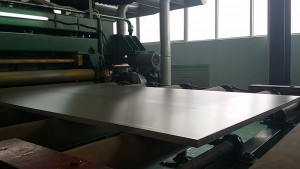
Anodized/Polished/Mill finish Aluminum Alloy Plate 5086 refers to the process of creating aluminum oxide film on the surface of an aluminum sheet by way of electrolysis when the aluminum sheet is place within the electrolyte as the anode. In the anodization device, a material with higher chemical stability inside the electrolyte, which include lead, stainless steel, aluminum, and so forth., serves because the cathode. The basic principle of aluminum anodization is definitely the electrolysis of water. When the present circulates, hydrogen is released in the cathode, when around the anode are usually not only oxygen molecules, but in addition oxygen atoms (O) and oxygen ions deposited (those are typically expressed as oxygen molecules inside the reaction). The aluminum of the anode is then oxidized by the oxygen deposited on it, forming a water-free aluminum oxide film; meanwhile, not all the oxygen generated reacts using the aluminum, and some is released as gas.
2. Choice of electrolyte for Anodized/Polished/Mill finish Aluminum Alloy Plate 5086
The prerequisite of forming the oxide film on the anode is the fact that the oxide film is soluble within the electrolyte. On the other hand, this does not mean that all anodization in an electrolyte with solubility may generate oxide films or oxide films with comparable properties.
3. Sorts of Anodized/Polished/Mill finish Aluminum Alloy Plate 5086
In line with the type of existing, anodization may be classified into DC anodization, AC anodization and pulse present anodization; in accordance with the sorts of electrolyte, it may be classified into sulfuric acid anodization, oxalic acid anodization, chromic acid anodization, mixed acid anodization and sulfo organic acid-based natural coloring anodization ; according to the properties from the films, it might also be classified into anodization for frequent film, anodization for challenging film (thick film), anodization for porcellaneous film, anodization for glossy finish and anodization for semi-conductive barrier layer. Among those, the AC sulfuric acid anodization would be the most usually used.
4. Structure and properties from the oxide film formed in the course of Anodized/Polished/Mill finish Aluminum Alloy Plate 5086
The oxide film obtained through anodization consists of two layers. The external layer is thick and porous, which grows on the dense internal layer with dielectric property; the internal layer is known as the barrier layer (also referred to as active layer). When the film is observed under an electronic microscope, each its transverse and longitudinal surfaces appear to possess vasiform pores perpendicular for the metal surface; the pores go through the external layer for the barrier layer in between the oxide film as well as the metal surface. Taking a pore because the axle, a honeycomb-shaped six-edge prism is formed by the dense aluminum oxide about, which can be named a unit cell. The whole film consists of many unit cells
Last article: application of aluminum 7075 plate
Next article 3003 aluminium titanium alloy price per kg